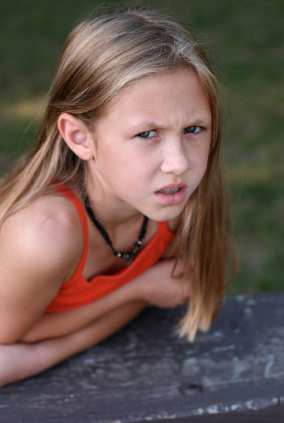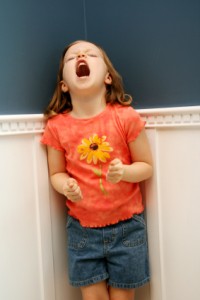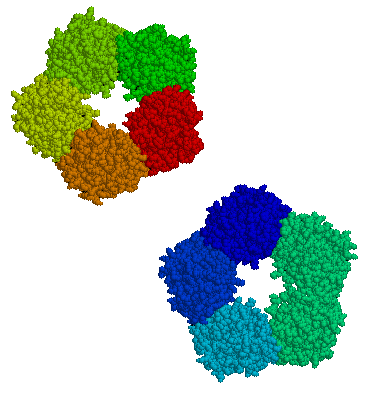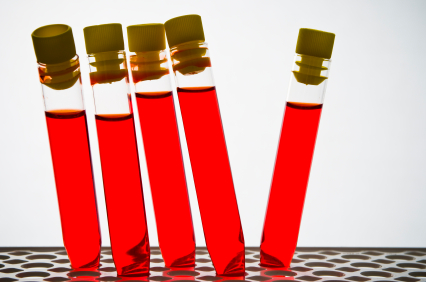CRP in Blood Predicts Onset of New Episode in Childhood Mood Disorders
At the 2013 meeting of the International Society for Bipolar Disorders, researcher Barbara Gracious presented evidence that increased levels of high sensitivity c-reactive protein (hsCRP), a marker of inflammation, were associated with an increased risk for developing a full-blown mood episode in 71 youth (average age 13.8) participating in a study called Longitudinal Assessment of Manic Symptoms (LAMS-2). The children were selected for the study because they had manic symptoms that were not severe enough to meet criteria for a diagnosis of bipolar I or II disorder. This research has not yet been published in a peer-reviewed journal, but the abstract can be found in first 2013 supplement of the journal Bipolar Disorders (page 67).
CRP levels are also known to predict cardiovascular disease and Type II diabetes.
Levels of 25-OH vitamin D, TNF?, and IL-6 did not predict a later mood disorder.
Editor’s Note: These data suggest the importance of assessing CRP and other markers in youth who are either prodromal (having early symptoms of a mood disorder) or at high risk because of a family history of a mood disorder.
The next step for clinical research would be to determine what treatment might decrease CRP and whether it would also prevent the development of mood episodes.
Irritability and Unipolar Depression in Kids
 At the 2012 Pediatric Bipolar conference sponsored by the Ryan Licht Sang Foundation, Graham J. Emslie gave a talk on irritable mood and unipolar depression in youth.
At the 2012 Pediatric Bipolar conference sponsored by the Ryan Licht Sang Foundation, Graham J. Emslie gave a talk on irritable mood and unipolar depression in youth.
Irritability is common in unipolar depression. Emslie suggested that if a child’s irritability is severe and the child destroys objects and denies being irritable, bipolar disorder might be likely. Irritable unipolar depressed children will generally acknowledge being irritable.
Emslie reported that 96% of youth in his randomized placebo-controlled studies of selective serotonin reuptake inhibitor antidepressants (SSRIs) recovered from their unipolar depression, but 46.6% relapsed. Those children with residual depressive symptoms were at double the risk for relapse into a depression compared to those who remitted completely. In those without residual depressive symptoms, there were no relapses if the children stayed on their medications.
Children were excluded from Emslie’s study if they had a positive family history of bipolar disorder, and perhaps because of this, very few participants switched into mania with antidepressants.
MORAL: Treat to remission and stay on the antidepressants associated with the remission. This has previously been found to be important for adults as well. (Emslie added that he would advise that a child stay on an antidepressant for at least a year after a remission was achieved, and longer if the child had difficulties in academic performance or relationships at school.)
Children with unipolar major depression who had a few manic symptoms at a subsyndromal level had poorer outcomes in Emslie’s study. The presence of subsyndromal manic symptoms in bipolar depressed adults is a risk factor for increased switching into mania when antidepressants are added to a mood stabilizer.
Comorbid substance abuse is another risk factor for poor outcome in childhood depression.
Biomarker Panel May Help Diagnose Major Depressive Disorder
It is hoped that measuring biochemical substances in blood will help in the diagnosis of mood disorders and help direct patients to the most effective therapeutic regimens. J.L. Billbielo reported at the 51st Annual Meeting of the National Institute of Mental Health’s New Clinical Drug Evaluation Unit (NCDEU) in 2011 that investigators from Ridge Diagnostics in North Carolina were using this type of biomarker panel in an attempt to provide a predictive algorithm for a diagnosis of major depressive disorder. The panel of 10 assays was derived from a larger screening set and included: alpha 1 antitrypsin (Alpha 1AT), brain-derived neurotrophic factor (BDNF), cortisol, epidermal growth factor (EGF), resistin, and soluble tumor necrosis factor receptor II (sTNFR2). The research group found that this optimized algorithm distinguished depressed subjects from normal controls with a sensitivity of approximately 90% and a sensitivity of 84%.
Editor’s note: This assay is available commercially and appears to represent an interesting panel of potential neurobiological markers of depression, including neurotrophic factors, endocrine stress hormones, and inflammatory markers. While its diagnostic utility is somewhat doubtful and must be further demonstrated, this editor hopes that similar panels could ultimately predict individual clinical response to a given treatment. For example, patients with high levels of inflammatory markers might respond better to treatments aimed at suppressing inflammation. Read more
Childhood Bipolar Disorder Still Poorly Treated
Kathleen Merikangas of the National Institute of Mental Health (NIMH) gave a plenary presentation on developmental manifestations of the bipolar spectrum at the 2011 Pediatric Bipolar Disorder Conference in Cambridge, Massachusetts this past March, which was sponsored by Massachusetts General Hospital and the Ryan Licht Sang Foundation. There were several striking take-away messages from her epidemiological research. She found that:
- Rates of bipolar disorder in childhood were relatively similar to rates among adults
- Only 22% of youth with bipolar spectrum diagnoses actually obtained mental health treatment for their conditions
- There was no evidence that these children were being over-medicated, as some non-epidemiological reports had suggested
She also reported that those with subthreshold bipolar spectrum disorders, i.e. those not meeting strict criteria for BP-I (including full-blown mania) or BP-II (including hypomania for four or more days) still were very ill and had considerable disability and dysfunction.
Merikangas reported on interviews of 10,123 youth aging from 13 to 18 found in the National Comorbidity Survey Replication Adolescent Supplement (NCS-A), and found rates of illness among the youth similar to those seen in adults. However, these children with bipolar spectrum disorders were more than ten times more likely to be on antidepressants than mood stabilizers, and more than four times more likely to be on antidepressants than atypical antipsychotics, again suggesting these children were not receiving the treatments recommended by consensus guidelines.
Temper Dysregulation Disorder in the DSM-5?
David Axelson from Western Psychiatric Institute and Clinic gave a plenary talk on temper dysregulation disorder (TDD) with dysphoria at the 2011 Pediatric Bipolar Disorder Conference, held in Cambridge, Massachusetts in March. Researchers in the field have been discussing whether a diagnosis of TDD or severe mood dysregulation (SMD), a name Ellen Liebenluft of the National Institute of Mental Health has used to describe a similar behavior pattern, is necessary and should be included in the upcoming fifth edition of the Diagnostic and Statistical Manual of Mental Disorders (DSM-5).
The rationale for including a TDD or SMD diagnosis was the upsurge in the diagnosis of bipolar disorder among children. Researchers like Liebenluft believed that bipolar disorder was being over-diagnosed in children, and that some children could instead be classified as having a disorder that was limited to chronic irritability. Temper dysregulation disorder is what researchers eventually settled on. Post-hoc analysis of longitudinal epidemiological studies suggested that some chronic irritability experienced by children and adolescents developed into depressive and anxiety disorders rather than bipolar disorder.
However, as described in the epidemiological data of Merikangas et al. (which we will post later this week) and others, the frequency of youth diagnoses of bipolar disorder are not out of proportion with the number of diagnoses in adults. Now that it does not seem likely that bipolar disorder is being over-diagnosed among children, there is less rationale for the new diagnosis categories. In addition, it seems that TDD may not even capture a specific set of behaviors or symptoms. Read more
Distinguishing Deficient Emotion Regulation from Other Disorders
 At the 2011 Pediatric Bipolar Disorder Conference in March, Steven V. Faraone from the State University of New York Upstate Medical University presented a plenary paper in which he described how to distinguish deficient emotional self-regulation from traditional mood disorders.
At the 2011 Pediatric Bipolar Disorder Conference in March, Steven V. Faraone from the State University of New York Upstate Medical University presented a plenary paper in which he described how to distinguish deficient emotional self-regulation from traditional mood disorders.
Faraone defined deficient emotion regulation as a lack of four regulating behaviors:
- Inhibition of inappropriate behavior related to strong negative or positive emotion
- Self-soothing of physiologic arousal that the strong emotions induced
- Refocusing of attention from strong emotions
- Organization of subsequent behavior in the service of an external goal
He found that deficient emotion regulation was closely related to ADHD, and progressively less similar to oppositional defiant disorder, anxiety disorders, major depression, conduct disorder and, lastly, bipolar disorder.
Deficient emotional self-regulation is associated with considerable functional impairment and is also characterized by these traits:
- Quick to anger
- Easily frustrated
- Emotionally over-reactive
- Easily excited by activities going on nearby
- Loses temper
- Argues with others
- Touchy or easily annoyed by others
- Angry or resentful
The behaviors associated with deficient emotion regulation are also prevalent among the siblings of children who have received the diagnosis. Deficient emotional self-regulation often occurs in families where ADHD is also present, but does not have a familial association with bipolar disorder or other comorbidities.
Activity Monitoring Discriminates Between BP Kids and ADHD Kids
At the 57th Annual Meeting of the American Academy of Child and Adolescent Psychiatry (AACAP) in October 2010, Gianni Faedda of the Lucio Bini Mood Disorders Center reported that monitoring of activity, sleep, and circadian-rhythm disturbances can be used to distinguish children with a diagnosis of bipolar illness (who showed more hyperactivity and less sleep), from children with ADHD and control children without illness.
Uric Acid Increases During Mania
At the 65th Annual Scientific Convention of the Society of Biological Psychiatry this year, Giacomo Salvadore reported that significantly higher levels of uric acid are found in patients with mania compared with normal controls.
Editor’s note: This study was particularly interesting because there was a highly significant difference between patients and controls, with very few values overlapping. The data suggest the possibility that uric acid may be a useful biological marker for mania, and is one that should be studied in childhood-onset bipolar illness to determine whether uric acid is a marker for mania in children as well.
Allopurinol, a widely used treatment for gout that reduces levels of uric acid in the blood, is an effective antimanic agent (based on data from two placebo-controlled studies, one by Machado-Vieira et al. and one by Akhondzadeh et al.). The new data on uric acid raise the possibility that high levels of uric acid may be a specific predictor of responsiveness to Allopurinol, although this hypothesis has not yet been explored.
In an article by Chung et al. just published in Psychiatry Research, it was reported that in a very large epidemiological study in Taiwan, patients with bipolar disorder have increased risk of gout.
Almost 40% of Children with Bipolar Disorder May Not Receive Necessary Treatment
 An article by Geller et al. in Bipolar Disorders last year illustrates the crisis in the treatment of childhood-onset bipolar illness in the US. The article indicates that almost 40% of the children with a credible diagnosis of bipolar disorder in this study never received anything near the appropriate treatment for their illness.
An article by Geller et al. in Bipolar Disorders last year illustrates the crisis in the treatment of childhood-onset bipolar illness in the US. The article indicates that almost 40% of the children with a credible diagnosis of bipolar disorder in this study never received anything near the appropriate treatment for their illness.
It is unfortunate when children fail to receive appropriate treatment because of ambiguity about a diagnosis, but it is even more frustrating when one of the world’s experts makes a diagnosis, and a child still fails to receive treatment based on consensus guidelines.
Over 8 years of follow-up treatment in their communities, these very ill children not only did not receive helpful drugs such as atypical antipsychotics or mood stabilizers, but they often received treatments that can be counterproductive, such as antidepressants or psychomotor stimulants. Those children who did receive appropriate treatment with lithium fared better and recovered significantly earlier than the others. Read more
Revisions of the DSM-V Related to Bipolar Disorder in Children
 The Pediatric Bipolar conference in March ended with a discussion led by Ellen Leibenluft and Danny Pine of the NIMH about possible changes in the diagnostic criteria for childhood onset bipolar disorder being considered for the fifth version of the Diagnostic and Statistical Manual of Mental Disorders (DSM-V), which will be finalized in the next few years. There has been an increase in the diagnosis of bipolar disorder in children in the past decade, and many have attributed this to over-diagnosis. Controversy about the precise symptoms and thresholds for diagnosis has been prominent in the literature and in the popular press.
The Pediatric Bipolar conference in March ended with a discussion led by Ellen Leibenluft and Danny Pine of the NIMH about possible changes in the diagnostic criteria for childhood onset bipolar disorder being considered for the fifth version of the Diagnostic and Statistical Manual of Mental Disorders (DSM-V), which will be finalized in the next few years. There has been an increase in the diagnosis of bipolar disorder in children in the past decade, and many have attributed this to over-diagnosis. Controversy about the precise symptoms and thresholds for diagnosis has been prominent in the literature and in the popular press.
The major change proposed was that the syndrome of severe mood dysregulation (SMD) described by Leibenluft et al. in 2003, may be called Temper Dysregulation Disorder (TDD), and would not be considered part of the bipolar spectrum. This is in part because SMD is not associated with an increased incidence of a positive family history of bipolar illness. Part of the motivation for separating TDD from bipolar illness is to cut down on what some consider the over-diagnosis of bipolar disorder in children.






